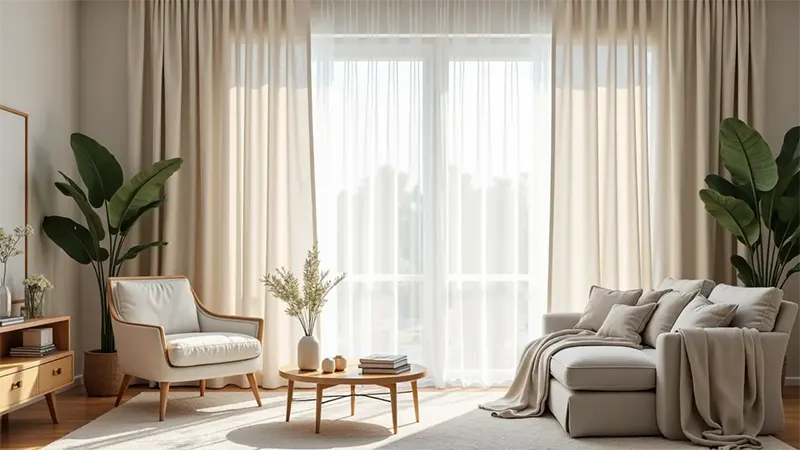
How to cleverly use home textiles to enhance the overall sense of space
Through the clever selection and matching of home textiles (such as curtains, bedding, carpets, pillows, etc.), the sense of space in the house can be significantly improved, making the space appear more spacious and transparent.
01.| Curtains: Use height and light transmittance to extend space
-
Color and material
Light colors are mainly light colors, such as white, beige, light gray and other light-colored curtains can reflect more light and avoid the sense of oppression brought by dark colors. Choose gauze curtains, linen or thin cotton materials to ensure natural light penetration and enhance the sense of transparency. - Curtain installation tips
Hang the curtains close to the ceiling rod so that the length of the curtains touches the ground, visually raising the height of the floor. Or the width of the curtains covers the entire wall (not just the windows) to create a sense of atmosphere. -
Avoid complex designs
Use fewer multi-layer pleats or heavy curtain heads, keep simple lines, and reduce visual burden.

02.| Bedding: Reduce visual oppression
-
Keep the color uniform
Choose light colors similar to the wall (such as beige, light gray) to weaken the volume of the bed. Avoid high contrast colors, use less dark bedding and large color blocks to keep the overall color tone harmonious. -
Choose simple patterns and layers
For bedding, you can use solid colors as the base, and match them with a small number of geometric or line patterned pillows or blankets. At the same time, avoid too many pillows or heavy quilts to keep the bed flat and simple. -
Low bed frame and light bedding
Choose a low bed frame (such as tatami or platform bed), and use light bedding (such as duvet) to lower the visual center of gravity, increase the height of the floor, and reduce the bloated feeling brought by heavy bedding.

03.| Carpet: Expand the visual range of the ground
-
Choose a light-colored large-sized carpet
Choose a light-colored large-sized carpet in the living room or bedroom (such as covering the sofa area or around the bed) to blur the sense of boundaries and visually extend the ground space. Avoid complex patterns in color, choose solid colors or fine stripes to maintain visual continuity. -
Cleverly use the relationship between carpets and furniture
Furniture edge pressing rule: The front legs of the sofa or bed are pressed on the carpet to enhance the integrity of the space.
Same color extension: The color of the carpet is similar to that of the floor or wall, forming a color block extension effect

04.| Pillows and blankets: small objects have a big role
-
Colors should echo each other
The color of the pillow should echo the color of the curtains, carpets or decorative paintings to form visual continuity. Or use a small area of bright color (such as bright yellow, light blue) pillows to brighten the space and avoid dullness. -
Control the number and volume
Place 2-4 pillows on the sofa or bed to avoid too much stacking and clutter. Try to choose flat or moderately fluffy fillings for pillows to reduce the bloated feeling.

Summary of key principles
- Light materials: Use more breathable materials such as yarn, linen, and cotton to reduce the sense of heaviness.
- Color unity: Home textiles and hard decorations are coordinated, mainly light colors, with local bright colors.
- Simplify the layers: Avoid excessive stacking and color block accumulation, and keep visual white space.
- Vertical guidance: Use hanging fabrics, high curtains, etc. to stretch the layer height.